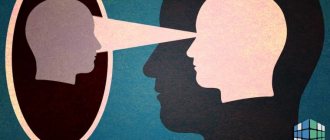Ordinary people call them outcasts or homeless people. Psychologists use the terminology “marginal”. You should understand the meaning of this word, since it is not so narrow and unambiguous. Having considered examples of marginalized people, we can identify types, which is what the online magazine psytheater.com will do.
Public propaganda is the desire for implementation. Each person achieves certain successes that allow him to maintain an average social level. Having a home, family, money, friends, work and other available attributes indicates that a person is socially healthy. However, a category of people that is separated from society is considered separately. They are called marginalized. In other words, they can be called homeless. However, not only this part of people can be called marginal.
If we consider this concept more fully, we can note that some of your friends may be called marginalized.
Who is the marginalized?
Who are called marginalized? These are individuals who are excluded from all groups in society. They are on the border between groups, but are not included in any of them. This can be either a voluntary desire of the marginalized person himself, or a forced measure due to the person’s rejection by other people.
The marginalized, one might say, is excluded from society, since it does not belong to any social group. He does not belong to the family, is not a member of public organizations, is not part of the work team, etc. The most striking example of a marginalized student is a student who is not loved and hated by other students. Such a student is also called an outcast or a black sheep.
Marginality is associated with personality degradation. Anyone who strays from the “correct” path accepted in society, strays from the pack, goes in his own direction, which does not obey social laws, is called a marginalist. Citing the example of homeless people and outcasts as examples of marginalized people, people develop a clearly negative attitude towards this concept. However, not everything is so simple.
Marginalized people are not always “degraded” people who need social assistance and even psychiatrist consultations. There are categories of people who are also considered marginal, but they cannot be called unhappy. For example, emo is a subculture that promotes its lifestyle. Outwardly they may seem unhappy, but this does not mean that they are unhappy.
Marginal people are also called lumpen. However, this is a misconception. The term “lumpen” was coined by Karl Marx, who included beggars, bandits and vagabonds among them. Despite the fact that these two categories are estranged from society, they are still different castes:
- Lumpen is a physically and morally degraded, declassed element, the “dregs” of society.
- Marginal is a person living separately from society.
Lumpens and marginalized people do not belong to any social group, so they cannot be assigned to anyone. However, lumpen people are individuals who have sunk to the very bottom, degraded. And the marginalized are still individuals separate from society, not belonging to any group.
The problem of marginality
The social transformation of modern society is characterized not only by the emergence of previously non-existent layers in the stratification system - especially the class of large and medium owners, the layer of “new poor”, marginalized, unemployed - but also by the corresponding adaptation of these layers to the newly emerging status-role functions and reorientation of social and personal identity. The focus over the years has been on various aspects of structural inequality, its deepening, social polarization and marginalization, integration and disintegration of social space; problems of middle class education; power relations; labor autonomy in social and production structures. To obtain a fairly complete picture of the processes in the social-structural sphere of Russian society, it is necessary to take into account the trends and scale of the formation of various social elements, social communities, the dynamics of which are determined by qualitative changes in the relations of property, power, income levels of various social groups and strata, the laws of structural restructuring of the economy and employment. It is known that as a result of sectoral shifts in the country’s economy, a crisis that affected entire groups of industries, a certain part of the active population remained out of employment and acquired the status of unemployed. Today this is 8% of the active population of Russia. The appearance of this layer significantly affects the quality of life of the entire population. But at the same time, due to changes in employment status, this part of the population has developed group security characteristics with its own values and norms, consumption structure, quality and lifestyle, identification preferences and life values. Thus, a number of new social group processes were implemented, the phenomenon of group consciousness and group consolidation and integration was formed. The peculiarity of Russian society lies, among other things, in the fact that the process of globalization is superimposed on a contradictory process of transformation, which is accompanied by deepening social inequality and the marginalization of a significant part of the population. The problem of deepening social inequality has received the name “Brazilization” in world literature. The growth of marginal layers (in the figurative expression of D. Copeland, “generation X”) can also be observed in Russian society. The transformation of Russian society inevitably led not only to changes in the social structure, but also acutely raised for traditional communities the question of the consciousness of individual and group social identity, integration and disintegration, place in the social hierarchy, solidarity, degree of cohesion, and the value system. Social stratification of Russian society. Ed. Professor Golenkova Z.T. “Summer Garden” Moscow 2003. P. 9. Continuing to count all undesirable elements among its victims, society feels that its deep foundations, fundamentally undermined by economic processes, are being undermined from within. Today, not only strangers are circulating, but also our own - those who are infected with the cancer that has taken root in our society. Alienation is a product of the disintegration of a society in crisis. The word "marginal" is gradually falling out of use because the men and women who live on the other side of the scenery do not make these choices themselves; they are quietly pushed towards this state, without being assigned to any of the traditional categories of rejection. Perhaps weaker than others (although this remains to be proven), they remain on the side of the road along which the battering ram cohort of those who remain in the saddle moves, indifferent to the lag and fall of the marginalized. From now on, the marginalized is no longer an outsider or a leper. He is like everyone else, identical to them, and at the same time he is a cripple among his own kind - a man with his roots cut off, cut off from the heart of his native culture, his native environment.
Meaning of the word marginal
How does sociology define the meaning of the word “marginal”? This is a person who practically does not participate or is completely excluded from any social group (economic, cultural, political). The marginal is considered excess material that needs to be looked after, monitored, and controlled. On the one hand, no one needs the marginalized. On the other hand, society cannot get rid of it due to its democratic approaches to each individual.
A marginalized person may physically be in a group, but not actually be considered a member of it. Let's remember the example of a schoolboy who is an outcast in his class. Physically, his body is in a group of other children, but his classmates do not communicate with him, are not friends, ignore him, and bully him.
The marginalized is physically in the group, but psychologically, emotionally and morally located outside of it. He is not part of it, does not participate in the creation of its biography, does not develop it, does not perform certain roles, does not adhere to its norms and rules. The presence of such a personality allows the group to understand where its boundaries end. The marginalized person himself has an objective vision of the group, he is free and can leave it at any moment, since he is not connected with it in any way.
In the classic version, a marginalized person is a person who is on the border of two groups (and not excluded from them). It is as if he is a member of two groups that, in their orientation, rules or activities, contradict each other. However, a person feels a conflict within himself, disagreement with any of the groups. He cannot make a final choice which group to join, abandoning the other. Thus, a marginalized person is a person who is part of two diverse groups, but does not ascribe himself to either of them.
Anyone can be marginalized! Here you just need to degrade, sink to the very bottom, abandon everything that is valued by society. You can become such a person if you stop striving for those heights that are considered socially significant:
- Work to earn a lot of money.
- Looking for a loved one to start a family with.
- Lead a healthy lifestyle.
- Be interested in social life and participate in it.
- Have friends, establish connections with them.
- Take care of your appearance and maintain hygiene.
- Improve: develop strengths and eliminate weaknesses.
- Study to become an educated person.
If, for example, you don’t do all of the above, you can easily become one of the marginalized. To achieve a marginal lifestyle, one only needs to abandon the progress and achievements of society, its rules and etiquette, aspirations and propaganda. You should stop being a law-abiding citizen who wants to be part of society, and start living simply your own life, setting your own rules that do not affect the interests of society.
It should be understood that a marginalized person is not always a person suffering from pathological addictions, an asocial and dysfunctional person. There are individuals who prefer solo swimming. They do not belong to any group, but may work or have a family. They create the integrity of the team, but do not participate in its development:
- At work, a person does not communicate with anyone, but does work.
- In a family, a person is simply listed as a member, but does not participate at all in the lives of his relatives.
The first marginalized were slaves who managed to get rid of their slave existence, but they were not able to adapt to the new conditions immediately. Thus, they were no longer classified as slaves, but they could not yet be called members of a cultural society.
A person can be given the status of “marginal” by anyone who, for one reason or another, does not accept him, condemns his way of life, or does not consider him a normal member of society. This form of “labeling” or “branding” is inherent in many cultured people who, unfortunately, are not yet fully educated, and therefore do not understand the essence of marginal life. However, if a person is truly marginalized, then he can decide for himself whether to continue to remain so or return to a social way of existence.
Signs of marginality:
- Severance of spiritual, social, economic ties in previous life.
- Mental internal problems due to inability to find one's place.
- Mobility due to lack of attachments and housing.
- Ease of involvement in illegal activities.
- Development of a personal value system.
- Hostility to social norms.
Examples of marginalized people known in history
Vivid examples of marginalized people in history are entire neighborhoods of New York emigrants, Chinese China Town and Russian Brighton Beach. Many emigrants, due to the prevailing mentality, find themselves outside of American society, unable to integrate into it and accept new values.
Another example is the marginalized as a subclass of Russian society, which arose as a result of the “breaking” of old and the emergence of new socio-economic relations in the 90s of the 20th century. Moreover, the marginalized people then included representatives of both poles of social inequality: the lower strata of society (“the social bottom”) and the so-called “new Russians.”
World famous writers and poets were called marginalized
, artists and creators, geniuses and scientists, who during their lifetime were considered insane and outcasts due to their dissimilarity with others and lack of understanding of their views and creativity by the rest of society. In the modern world, there is another group of marginalized people - people who spend most of their time at the computer, which leads to a change in their consciousness, the predominance of virtual life over real life.
From history, the marginalized include:
- Diogenes of Sinope - ancient Greek philosopher, student of Antisthenes;
- Stepan Razin - Don Cossack, leader of the uprising of 1670-1671;
- Emelyan Pugachev - Don Cossack, leader of the Peasant War of 1773-1775;
- Ustim Karmelyuk - Ukrainian peasant, leader of the peasant movement in Podolia in 1813-1835.
If you remember the literary heroes:
- James Moriarty - A. Conan Doyle Cycle of works about Sherlock Holmes;
- Ostap Bender - Ilf and Petrov “Twelve Chairs”;
- Rodion Raskolnikov - F. Dostoevsky “Crime and Punishment”;
- Lev Myshkin - F. Dostoevsky “The Idiot”;
- Polygraph Sharikov - M. Bulgakov “Heart of a Dog.”
Important
! Marginalized people have existed at all times. This is an inevitable phenomenon. The task of each of us as a full member of society is to create conditions for the marginalized that will facilitate their return to a normal, full life.
Types of marginalized people
Marginalized people can be divided into 4 subtypes, which are characterized by their characteristics of manifestation and the reasons for the development of such a lifestyle:
- Ethnic. A person becomes marginalized if he leaves the ethnic group of his own nationality and begins to live in a foreign ethnic group. Problems may arise due to the need to immediately adapt to new conditions. Differences in appearance, language forms, cultural traditions and religion may not facilitate rapid adaptation. These are migrants and refugees (people who are forced to move to save their lives).
- Economic. A person who loses his previous level of income becomes marginalized. This may be due to the loss of a job, loss of housing, a change in the economy, etc. It often happens during political and economic crises in the country.
- Social. A person who changes social status becomes marginalized. Usually happens when trying to move into a better class of society (such as the rich and famous). However, a person does not succeed, he slides even lower or gets stuck on the border between the previous social status and the new one, not being able to get into one of them.
- Political. A person who stops trusting government officials and the political system becomes marginalized. This happens during periods of crisis, government restructuring, etc.
Examples of marginalized people
Sociologists and psychologists consider marginalized people to be an advanced, civilized, open to everything new, developed, mobile type of personality. In other words, these are people who can objectively assess any environment and situation because they are not involved in it.
Many categories of people can be called marginalized:
- Alcoholics and drug addicts.
- Homeless people, tramps and beggars.
- Bandits, sociopaths, psychopaths.
- Downshifters are people who learn to live without the means of progress and technology.
- Refugees and migrants.
- Those who have lost their jobs, family, changed their place of residence, retired, served in the army or served time in prison.
Many writers and poets, brilliant minds and scientists can be called marginalized, who at one time were considered outcasts of society, since no one understood them or took them seriously. Today, we can distinguish another category of marginalized people - those who constantly spend time playing computer games. These people may be members of virtual groups, but in essence they are outcasts from society.
Marginal personality according to Robert Park
American sociologist Robert Park considered the following to be the main character traits and personality traits of marginalized people:
- anxiety;
- aggressiveness;
- ambition;
- touchiness;
- selfishness;
- categorical views;
- negativism;
- unsatisfied ambition;
- anxiety states and phobias.
In society, marginalized individuals were people with an asocial lifestyle (poor refugees, homeless people, beggars, tramps, people with various kinds of addictions, lawbreakers), who can be classified as representatives of the social bottom. Their living conditions have a significant negative impact on their mental state. Any civilized society lives according to its own established rules, customs and norms. R. Park believed that a marginal personality
:
- Rejects any norms and traditions accepted in society.
- Has no sense of duty towards the society in which he lives.
- Experiences a strong need to be alone and avoids the company of people.
Important
! Most sociological experts and practicing psychologists believe that the margins are a source of cultural growth. He can objectively, without external influence, evaluate any phenomenon and situation, because he is not involved in it, as if isolated. It fills a social group with new ideas, views, introduces new trends, helps members of society to develop, broaden their horizons, look at problems from a different perspective, and instills tolerance.
Bottom line
Marginality may seem like a negative quality. However, it has its advantages:
- The ability to see what society does not see.
- The ability to be detached, mobile, easy-going.
- Fearlessness, because the marginalized is not attached to anything.
The negative aspect of marginality is loneliness in the big world of people, where no one understands a person and treats him negatively. Often those around them are subject to stereotyped thinking, which is excluded in the case of the marginalized.









